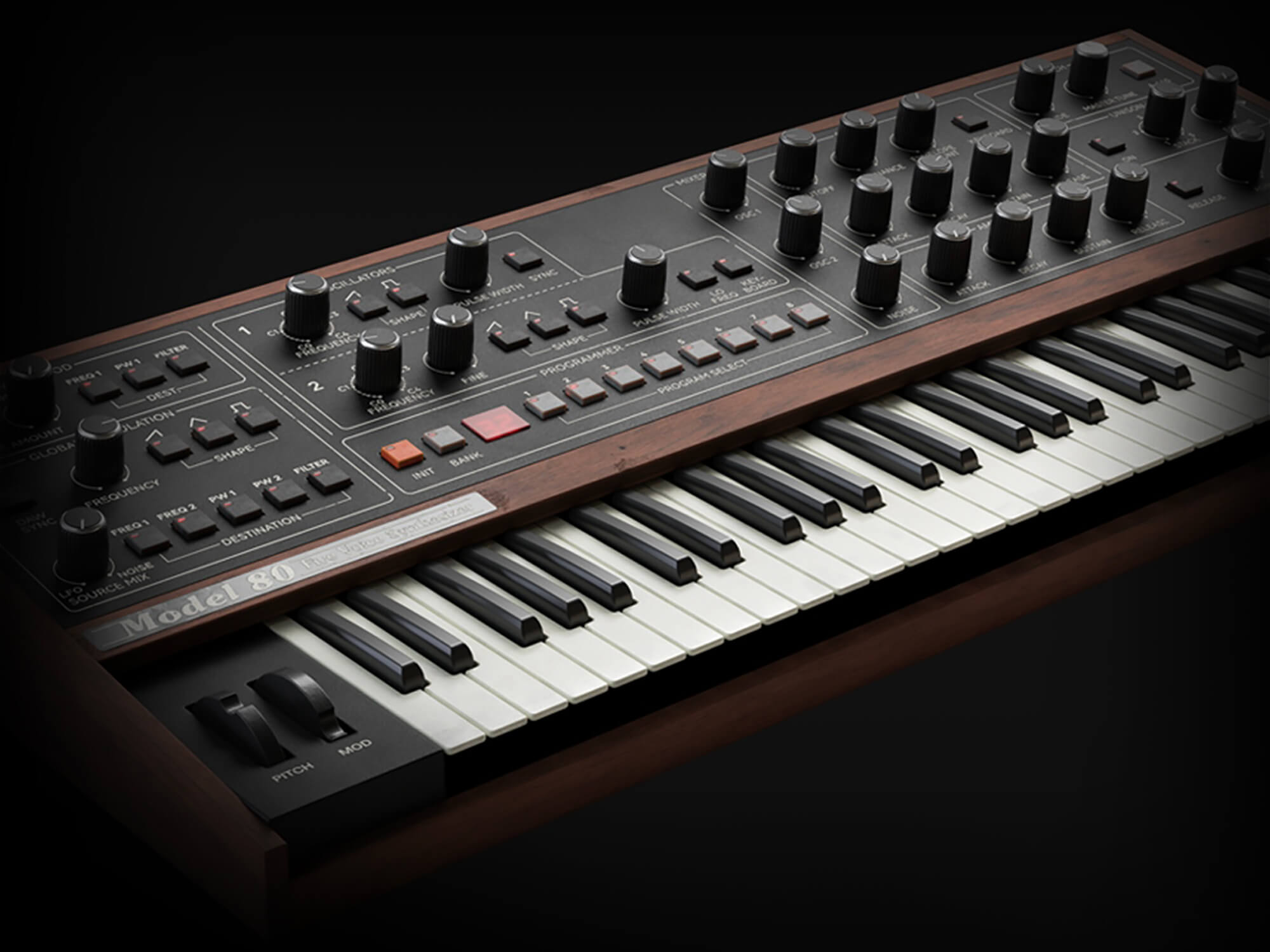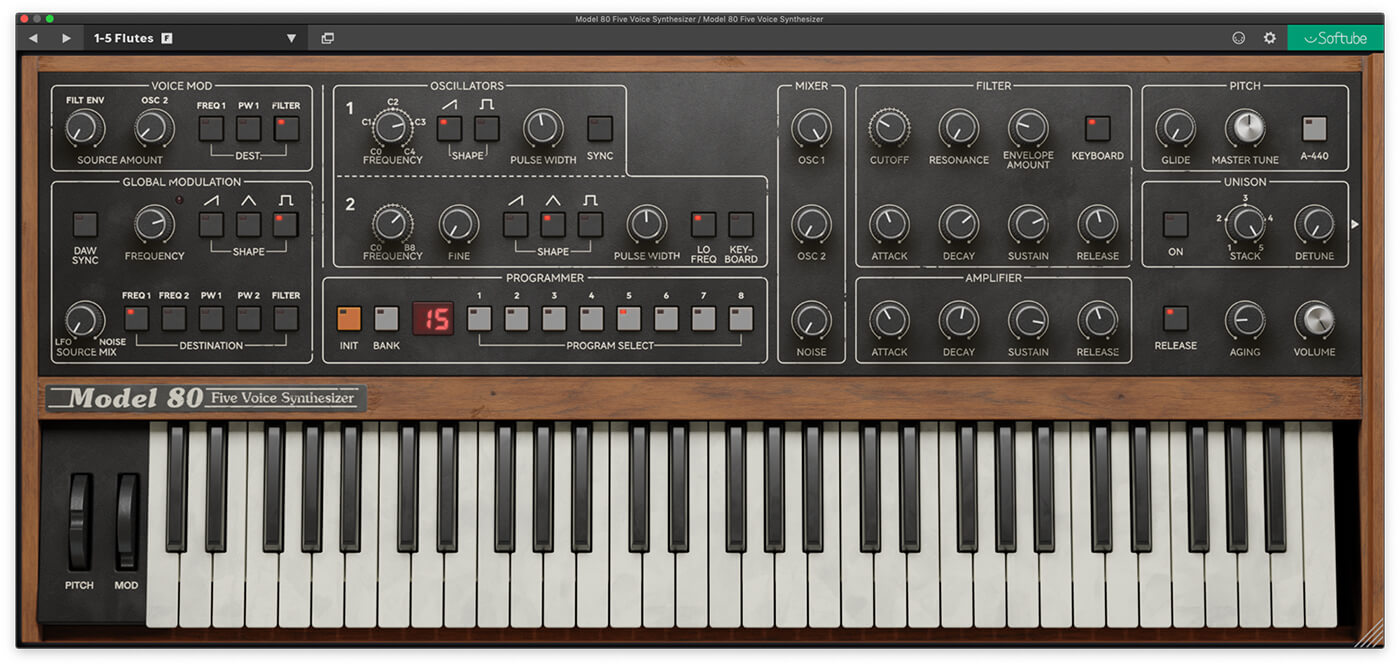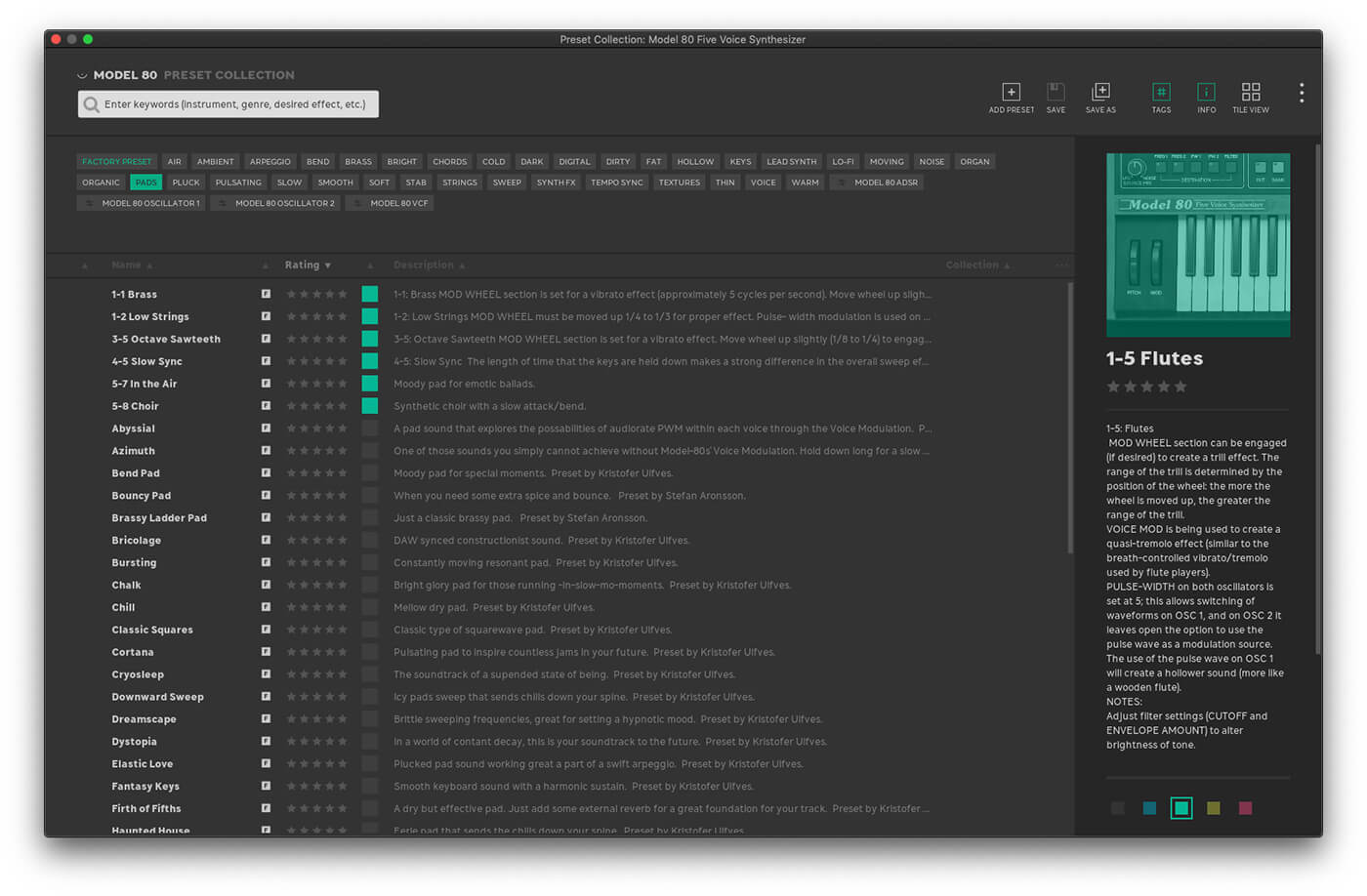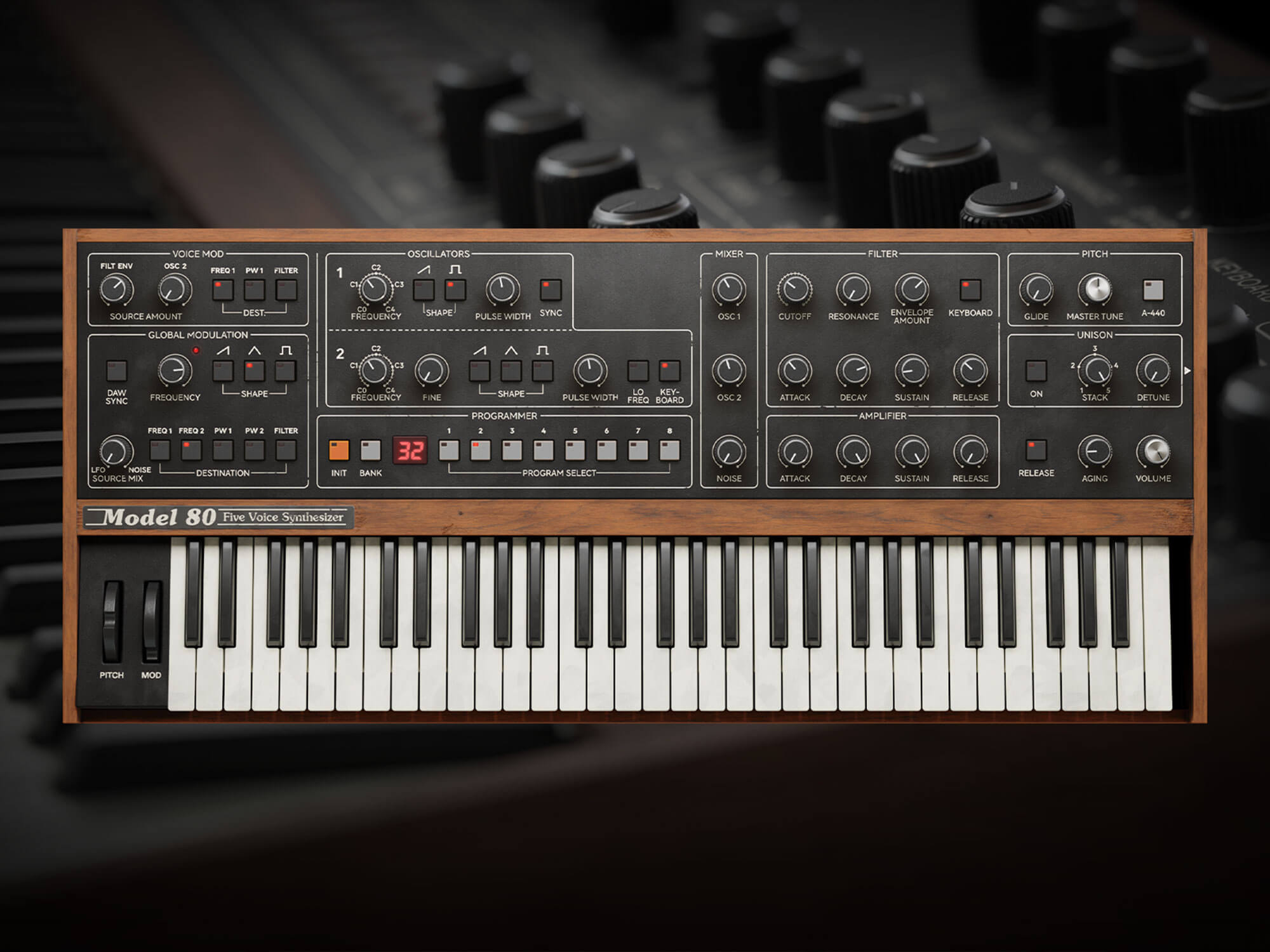Softube’s Model 80 stunningly emulates a true synth legend as a plugin
Some say there’s little better for the soul than to absorb the wisdom of past prophets – in the case of the Prophet-5, we couldn’t agree more

Softube Model 80. Image: Softube Facebook
Review Overview
Our rating
8
Our verdict
⊕ Can invert the Voice Mod signal
⊕ Velocity and aftertouch can control amp and filter
⊕ Comes with five modules for Softube Modular
⊖ Option to increase polyphony would ease polyphony limitations
⊖ Note priority choices would be welcome
⊖ No built-in effects means managing additional plugin chains
First released in 1978, Sequential Circuits’ Prophet-5 was at the vanguard of polyphonic synthesizers. As with other seminal synths of the time – most notably the Roland Jupiter-4 and Yamaha CS-80 – the sublime and unique sound of the Prophet-5 influenced contemporary music for decades, elevating the instrument to true legendary status. It’s no surprise, then, that so many software emulations of this vintage masterpiece have been released over the years. The latest developer to revive the synth is Softube with its new Model 80 plugin.
READ MORE: The best hardware synths to buy: 17 best polyphonic synthesizers to buy
Revising the revisions
As suggested by its name, the Prophet-5 – and so the Model 80 – is a five-voice synth, with each voice generated from a pair of oscillators and a noise generator. The first oscillator offers saw and square/pulse waveforms, while the second throws in a triangle wave; this slightly limited choice being compensated for by the ability to combine oscillator waveforms.
The mixed output of oscillators and noise is fed to a 24 decibels-per-octave low-pass filter. The filter’s cutoff frequency is quantised to semitones, which helps in creating pitched filter effects, but the Model 80 can also be switched to a smooth mode with no quantisation.
Being based on Sequential’s Rev. 3 edition of the Prophet-5 (which first broke cover in 1980, hence Softube’s Model 80 name), the plugin models the Curtis filter chips found in that hardware. This may be surprising to classic synth aficionados given the widely-held view that the electronic chips used in the previous revisions give a more pleasing sound.

This is an argument over fine details, though. Both variations sound awesome and, in any event, the Rev. 3 is a much closer match, sonically-speaking, to Sequential’s Rev. 4 re-release in 2021. The extent of this similarity is ably demonstrated by Starsky Carr’s head-to-head between the Rev. 4 hardware and the Model 80 software. “Playing the Prophet-5 versus the Softube [Model 80], they’re staggeringly close – imperceptbile differences. The main difference is that [the Model 80] is a Rev. 3 and [Starsky Carr’s Prophet-5] is a Rev. 4.”
While the Model 80 plugin is an emulation of a synth with a fixed, hard-wired architecture, the plugin includes five modules for use within Softube Modular. We think this is a brilliant addition, allowing you to include authentic Prophet-5 oscillators, filters, envelopes and LFOs in your modular setups.
Modern additions
Prophet-5’s modulation system is quite limited when compared to the multiplicity of sources and destinations offered by most modern synths, but the Model 80 reproduces it faithfully with few modern concessions. This adds hugely to the authenticity of Softube’s model because, while the oscillators and filters define the sonic character of a synth, it is the modulation that provides a unique and distinctive flavour.
That said, Softube offers several add-ons to the modulation system. Firstly, the Voice Mod modulation signal (sourced from oscillator 2 and the filter envelope) can be inverted, giving far more options for pitch and filter modulation. Also, the plugin recognises velocity and aftertouch, and can map these to amp and filter cutoff, which allows for enhanced expression in your performances.

There are a couple of other notable concessions to modernity. First is the ability to apply a stereo spread to the voices, which can create interesting effects when playing in polyphonic mode, but is most useful when used in conjunction with the monophonic Unison mode. Dial in some voice detuning and the Model 80 becomes a monster monosynth.
The other significant addition is an Aging control that adds an aural patina that simulates the impact of advancing years on the synth’s virtual circuitry. Tuning and filter cutoff control become more unstable, and the sound becomes dirtier and noisier, both of which can sound great when used in the right context.
Authenticity…to a fault?
Softube’s additions are welcome, and don’t impact the overall authenticity of the Model 80, particularly because all can be disabled. But whether enabled or not, the Model 80 offers an exceptionally convincing rendition of the original hardware, with the paucity of modern additions adding to the purity of the experience.
On the one hand, this purity is as welcome as it is remarkable and gives the impression that you are playing a genuine bona-fide Prophet-5. With an original Rev. 3 costing something like £6000, and a new Rev. 4 over £3000, at the Model 80’s price point, you get an awful lot of authentic classic synth for your money.

On the other hand, we feel there are a few ways in which tempering this laser-focused authenticity could make for an even more enthralling experience. Built-in effects would save you from having to manage plugin chains alongside Model 80’s presets. The five-voice polyphony is accurate, but an option to increase the polyphony would make the instrument more flexible.
In addition, it’s surprisingly difficult to adapt to the lowest-note priority system of the hardware if you are used to the highest-note priority used by most modern synths, so an option to change this would be ideal.
A preponderance of Prophets
The absence of these quality-of-life features isn’t a deal breaker because there is no faulting the Model 80’s sound and realism, nor how satisfying it is to play. But some of these missing features can be found on Model 80’s main competitors – Arturia’s Prophet-5 V and U-he’s Repro-5 – which might make you second-guess your purchase.
Whichever way you slice it, the Model 80 is a perfect way to satisfy your Prophet-5 cravings without taking out a bank loan ��– and it’s an excellent synth in its own right.